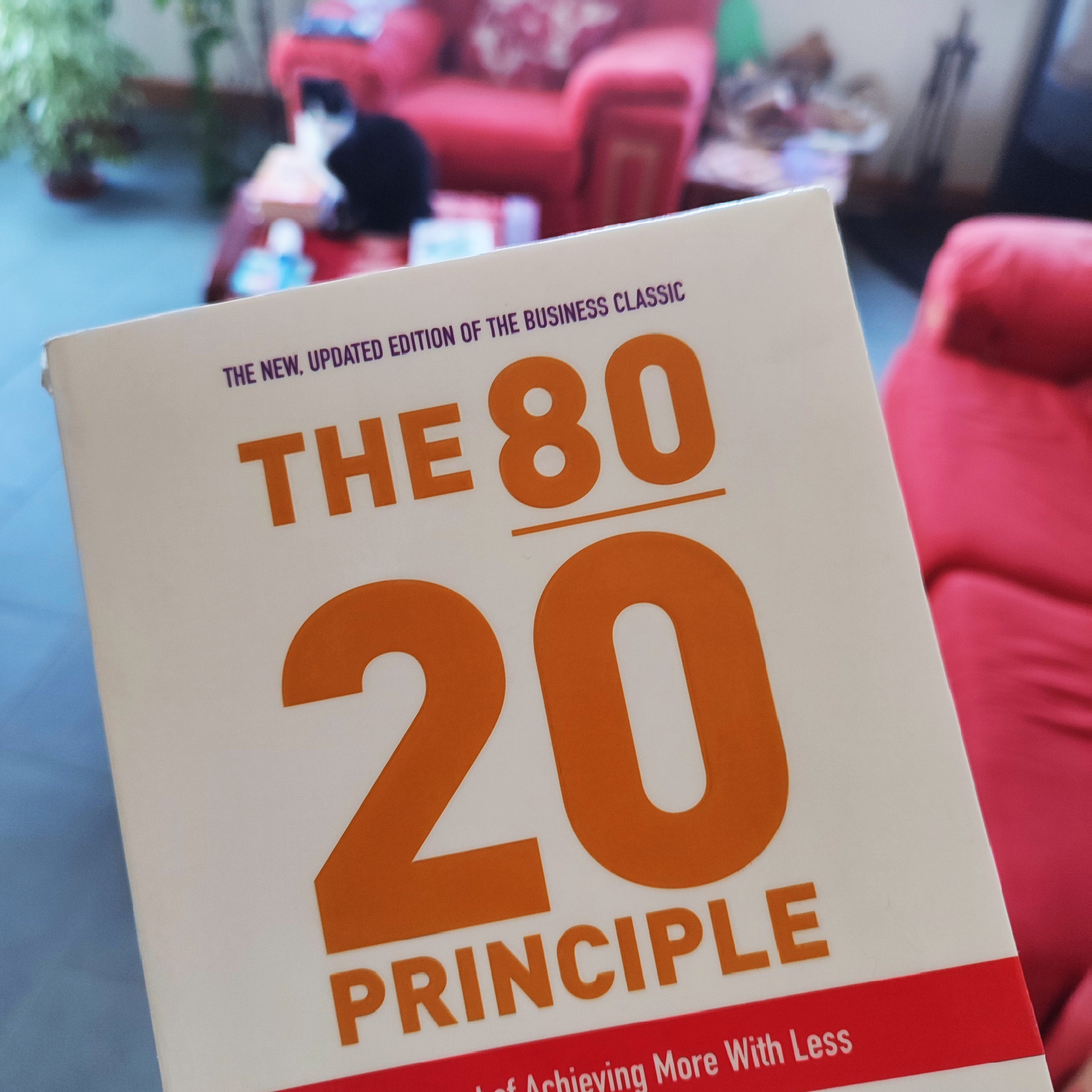Table of Contents

I must admit I got a bit carried away with last week. By Sunday I had run out of steam so the newsletter was published before I really felt it was ready. We were doing one of those weeks where both of us are trying to ‘work like normal’ whilst still trying to entertain a 6-year old the entire day. Whilst I had some incredibly productive mornings, by 9am I had done an epic 4hr focus session. I was pretty knackered before the days even started; I have full respect for parents who do that on a more permanent basis. All that being said, I was excited to research this piece. Annette
If you missed the first part, the TL;DR is that LLMs can provide some useful pointers for how to apply the Pareto Principle within a research context. However I find their use a little bit challenging when it gets into the real, novel research stuff. It doesn’t really help us get to the nitty gritty of what it actually means in our day to day researcher life.
So now I continue with last week’s question: if the Pareto Principle occurs all over the natural world, is it not just nature we will get to 80:20 in whatever we do?
The Pareto Principle
Firstly I want to dive into what the Pareto Principle means a little more deeply. Lets go beyond the description the LLM gave us. This is because it helps us understand the logic behind how we apply it. I find it helps me think about it a little differently.
Richard Koch, author of ‘The 80/20 Principle’ believes the Pareto Principle has its roots in chaos theory, with the idea that the universe does not work in a linear fashion. If anything exists ever so slightly out of balance, then it will move in favour towards the positive imbalance, even if one outcome is only 1% higher in occurrence.
Cool stuff; Atomic Habits in practise!
Pareto discovered a predictable imbalance in cause and effect, and he found this to occur across many areas of society. It wasn’t until 50 years later his idea was picked up further and applied as the 80:20 rule in industry.
It’s only natural but it’s approached differently
The Pareto Principle applies in many natural systems, but different terms are used. These are:
- Pareto-efficient
- Pareto-optimal
These are interesting. What they basically say is if you find yourself with a set of available resources, then there is any number of ways of using those resources. If you use those resources in the most optimal way possible then the system can be described as Pareto-efficient. That is if you were to use those resources available to you in a different way, then it would have a negative effect on the outcome. It’s more about resource use efficiency which is what Pareto originally described in his work.
Pretty much all natural systems are incredibly resource-efficient and it is this which leads to the idea of ‘complementarity effects’ i.e. the sum of any ecosystem is greater than the parts of which it is made. One part complements another and overlap is minimised.
Often it has us scratching our heads as to how it all fits together because it is in how the sum comes about, that makes it difficult to explain. Mathematics works on the principle of balanced equations, but complementarity does not appear to follow that rule.
[I wonder if there are any mathematicians who study this curiosity? 🤔]
Generally in nature, the more complementarity effects there are, the more diverse and stable the system.
If we are to put the Pareto Principle into practise, then if we understand the idea that anything we do is most likely to be inherently imbalanced and we are aiming for optimal resource use whereby the aim is to have the whole greater than the sum of parts, then it can change the way we think around cause and effect.
At least it does for me. What about you?
💡 Action Point: With this reframing of the Pareto Principle, how can you use your resources optimally? How can you build an inherent imbalance into your work? And where can you work together both within yourself and with others to make the whole greater?
There are more authentic ways to apply the Pareto Principle to research
In the previous post I asked the Capacities LLM (using Chat GPT 3.5) some ideas for how we can apply the Pareto Principle to our work as a researcher. Well, here’s what I think are some better ways I thought of, on how to apply the Pareto Principle to research work:
- Consider any system as self organising - even soil has been indicated as such - design experiments with this in mind; scale → most important causation → most likely impact
- It is unlikely the relationships in my data will be linear; there are some things which will disproportionately explain my data. Aim to find these things and don’t expect much - i.e. statistical significance - from the other 80%.
- In the same sense, use this to identify the 20% of results I need to present in graphs and tables in my results.
- Spend 80% of my time in the discussion, talking about this 20%.
- Make sure 20% of my week is optimised for directly tangible outputs - i.e. creating those important graphs and words.
- Aim to maintain relationships with 20% of the people I connect with.
- And be flexible about the 20%; it could be 10% or it could be 30% because it’s not a rule, just a guideline.
These suggestions are much more researcher realistic than the LLM output I considered previously.
For example, the LLM suggested I should identify the top 20% of people in my field to develop collaborations with. That is unlikely to be helpful to anyone, other than exacerbating the problem of unequal power balance and making already busy people, more busy. I should absolutely follow their work, but early career research work is just as valuable and often, can be more beautiful in its simplicity.
It would be much more human to develop authentic relationships with 20% of the people I meet, to grow and work together.
Perhaps it reinforces the point I mentioned where LLMs are 80% correct/useful.
So to summarise, the Pareto Principle is in our nature to do anyway. By understanding and appreciating it, we will just get to the ‘end point’ quicker. The question should be, because it is a fundamental underlying current of cause and effect, how can we backwards engineer it within our work, and use it as a tool to understand what are the driving factors we should focus on? If we reframe it as an inherent imbalance to everything we do then we can ask the question of does this thing add to system organisation? Or does it add to disorganisation?
Plus don’t worry too much about forcing this efficiency - things will organise themselves over time anyway! It’s all part of nature. As James Clear, in Atomic Habits said, aim to get 1% better every day. I suggest the Pareto Principle will sort out the rest anyway!!
💡 Extra cool info: I’ve also just started reading ‘Brain Food’ by Lisa Mosconi. The evolution of our brain, and how we should nourish it, are a beautiful example of the Pareto concept in action!
🧪 Sharpen Your Skills
🧫 Interesting Stuff
- I watched an interesting talk by marketing expert Rory Sutherland on the marketing channel Nudgestock. It made me think differently about time and how quicker is not always better. In fact this video had quite a profound impact on me, my work and business ideas for the future. As someone who appreciates taking my time over things, it was almost reassuring to see someone say it’s OK to be slower!!
💬 Quote of the Week
“The reasonable [person] adapts [them]self to the world. The unreasonable one persists in trying to adapt the world to [them]self. Therefore all progress depends on the unreasonable [person].”
George Bernard Shaw
📚 What I’m Reading
- The 80/20 Principle by Richard Koch
- Brain Food by Dr Lisa Mosconi
I can't say how much it means to me for you to subscribe and read this newsletter. Thanks again and see you next week.
Annette








Comments